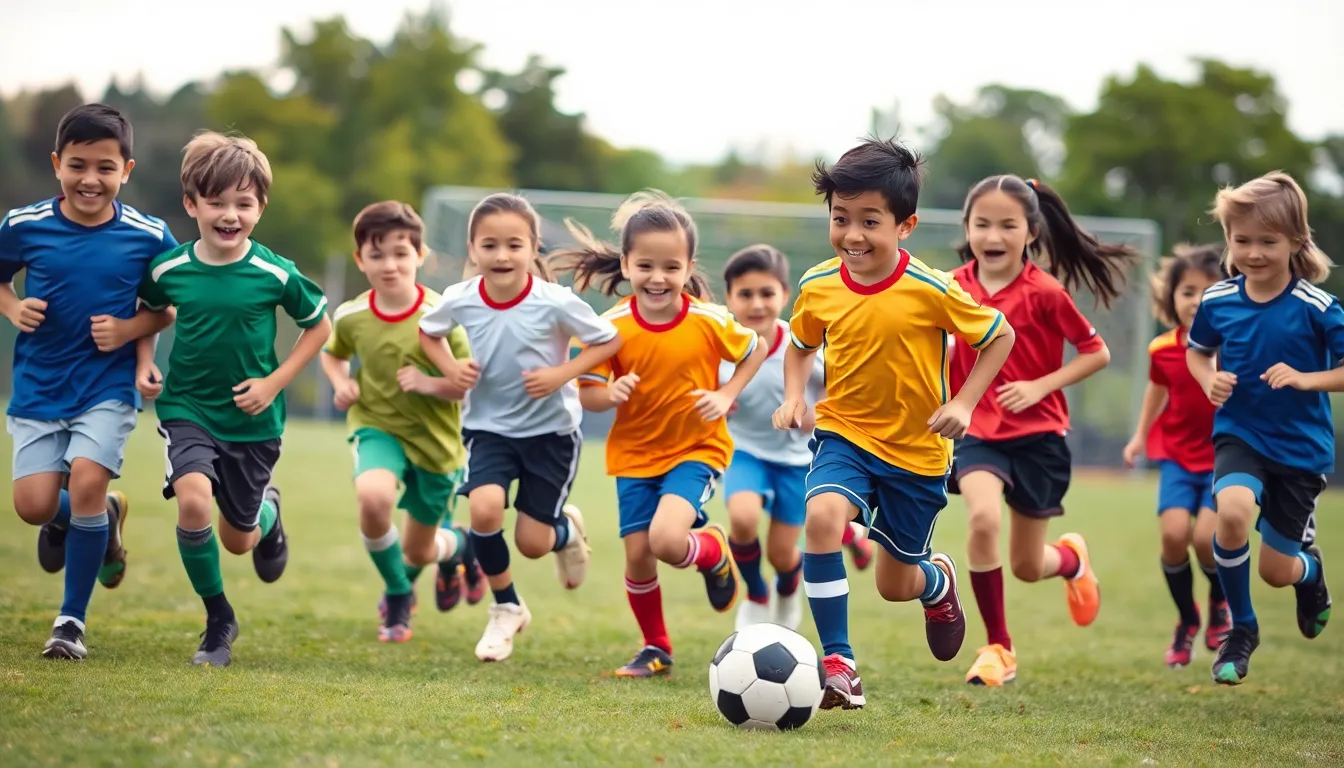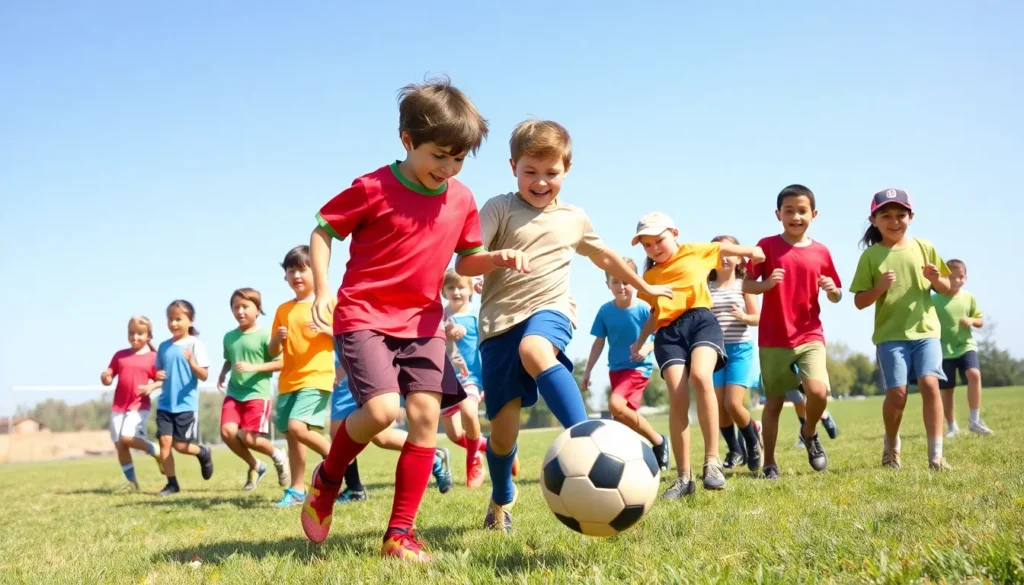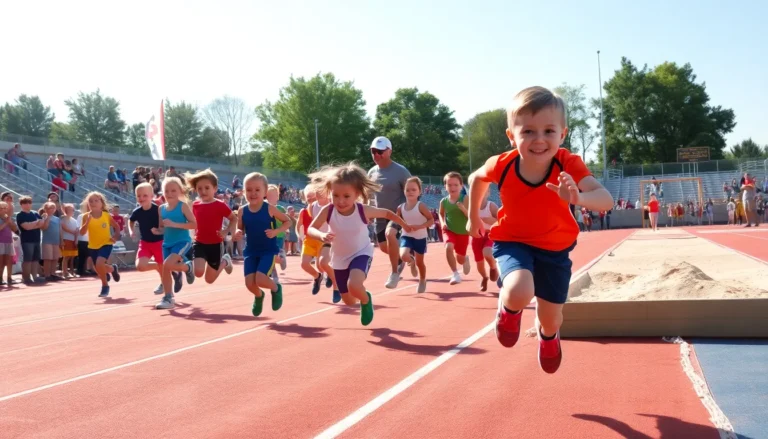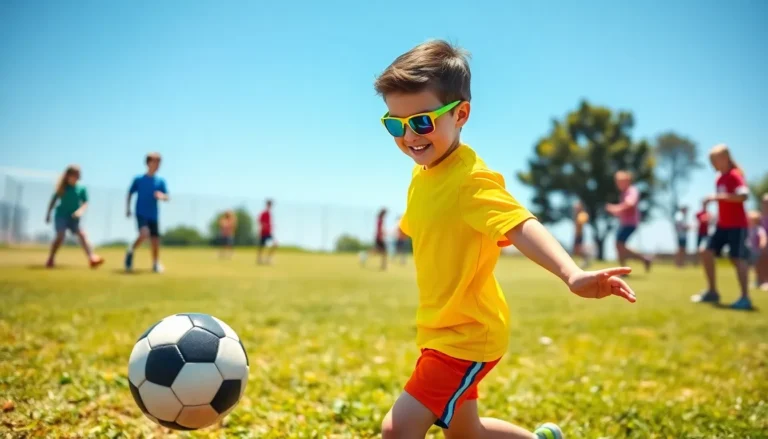Table of Contents
ToggleWhen it comes to keeping kids active and engaged, group sports activities are a game-changer. Forget the couch and those endless video game marathons; it’s time to swap the controller for a soccer ball or a basketball. Not only do these activities promote physical health, but they also teach teamwork and social skills. Plus, who wouldn’t want to see their child score a goal and do a victory dance?
Importance Of Group Sports Activities For Kids
Group sports activities play a crucial role in the development of kids. Engaging in these activities not only keeps them fit but also cultivates essential life skills.
Physical Benefits
Physical health improves significantly through group sports. Activities like soccer, basketball, and swimming enhance cardiovascular fitness. Participation promotes strength and coordination, as children learn to control their movements. Regular engagement helps combat childhood obesity, fostering a lifelong habit of staying active. Studies indicate that kids involved in sports show better endurance and flexibility compared to their sedentary peers. Such benefits contribute to a solid foundation for a healthy future.
Social Benefits
Social skills flourish during group sports activities. Children learn about teamwork and build friendships as they collaborate toward common goals. Communication becomes vital on the field, allowing kids to express themselves and develop confidence. Exposure to diverse teammates encourages inclusiveness and respect for differences. Research indicates that children involved in group sports are more likely to make lasting social connections. These interactions create a sense of belonging and enhance overall interpersonal skills.
Emotional Benefits
Emotional well-being thrives through participation in group sports. Kids experience a boost in self-esteem as they accomplish personal and team challenges. Sports offer a platform for healthy competition, teaching resilience and coping strategies. Furthermore, teamwork reinforces the value of supporting one another, promoting empathy among peers. Engaging in sports reduces stress and provides an outlet for frustration, resulting in improved mood. Findings suggest that children involved in team sports are less prone to anxiety and depression, emphasizing the positive emotional impact.
Popular Group Sports Activities For Kids

Group sports activities engage children physically and socially. These activities build skills and foster teamwork, making them essential for a child’s development.
Team Sports
Team sports provide an excellent way for kids to bond. Football, basketball, and soccer are popular choices, allowing children to work together toward a common goal. With these sports, kids enhance their physical fitness, improve coordination, and develop strategic thinking. Additionally, participation teaches valuable lessons in cooperation and communication, which are vital for their social growth. Coaches play an integral role, guiding children to understand the importance of teamwork and sportsmanship.
Individual Sports In A Group Setting
Individual sports in a group setting encourage personal achievements while promoting camaraderie. Activities like swimming, tennis, and gymnastics allow kids to focus on their skills within a supportive environment. In these settings, children experience healthy competition, pushing themselves to improve. Moreover, they build self-discipline, confidence and learn to celebrate their progress. Group classes also foster a sense of community, as participants share similar goals and motivate each other in their journeys.
How To Choose The Right Group Sport
Selecting the right group sport for kids involves considering various factors to ensure a positive experience. Age appropriateness and interest are key elements in this decision-making process.
Age Appropriateness
Age significantly affects a child’s ability to participate in specific sports. Younger children thrive in activities that focus on skill development, cooperation, and fun. Sports like soccer or T-ball introduce basic concepts while promoting physical activity. For older kids, more competitive sports, such as basketball or volleyball, match their growing skills and desire for teamwork. Each age group possesses different physical and emotional capacities. Matching a sport to the child’s developmental stage enhances enjoyment and learning opportunities.
Interest and Engagement
Interest in a sport greatly influences a child’s enjoyment and commitment. Kids are more likely to stay engaged when they participate in activities that excite them. Encouraging children to try various sports exposes them to different skills and increases their likelihood of finding a favorite. Listening to their preferences plays a vital role; hobbies change as kids grow. Supporting their choices fosters a sense of autonomy while promoting lifelong physical activity habits. Prioritizing both interest and enjoyment leads to increased participation and long-term benefits.
Safety Considerations
Safety during group sports activities for kids is paramount. Understanding potential risks and implementing preventive measures enhances the experience for young athletes.
Injuries and Prevention
Injuries can occur during sports activities, making prevention essential. Wearing appropriate gear, including helmets, pads, and proper footwear, significantly reduces risks. Encouraging warm-up exercises prepares muscles and helps prevent strains. Coaches should emphasize proper techniques for skills and movement to minimize the likelihood of accidents. Additionally, regular breaks during practice sessions keep kids hydrated and prevent overexertion. Monitoring for any signs of distress or fatigue allows for timely intervention and ensures overall safety. Overall, education about common injuries and their prevention leads to a safer environment.
Supervision Guidelines
Supervision remains a critical factor in ensuring children’s safety during sports. Adults should maintain a visible presence during practices and games, providing guidance and immediate assistance when necessary. Setting a low adult-to-child ratio enables better monitoring of participants’ activities. Coaches and volunteers must be trained in first aid and emergency procedures, equipping them to handle unexpected situations. Establishing clear communication between coaches, parents, and kids fosters a team approach to safety. Actively observing behaviors and ensuring compliance with safety measures enhances the overall sports experience for children.
Group sports activities are vital for children’s growth and development. They offer more than just physical fitness; they build character and foster friendships. Engaging in sports helps kids learn essential life skills such as teamwork and resilience while boosting their self-esteem.
Parents play an important role in guiding their children towards suitable sports that match their interests and developmental stages. By supporting their kids in exploring various activities, they can cultivate a love for physical activity that lasts a lifetime.
Safety should always be a priority during these activities. By ensuring proper supervision and following safety guidelines, parents and coaches can create a positive environment where children can thrive. Ultimately, group sports activities lay the foundation for healthier and happier lives.








